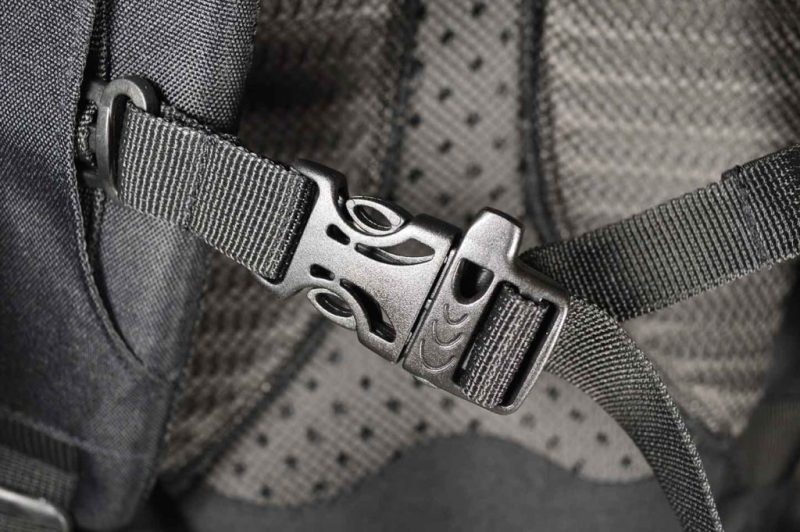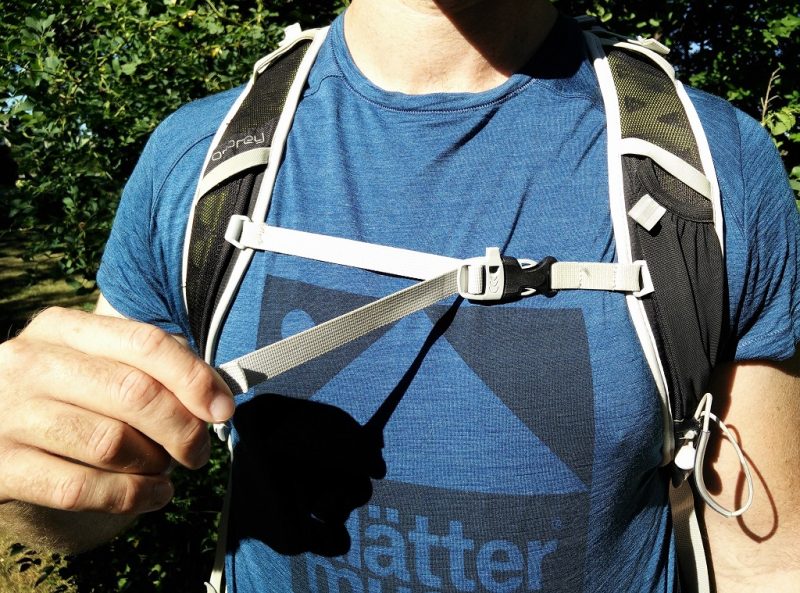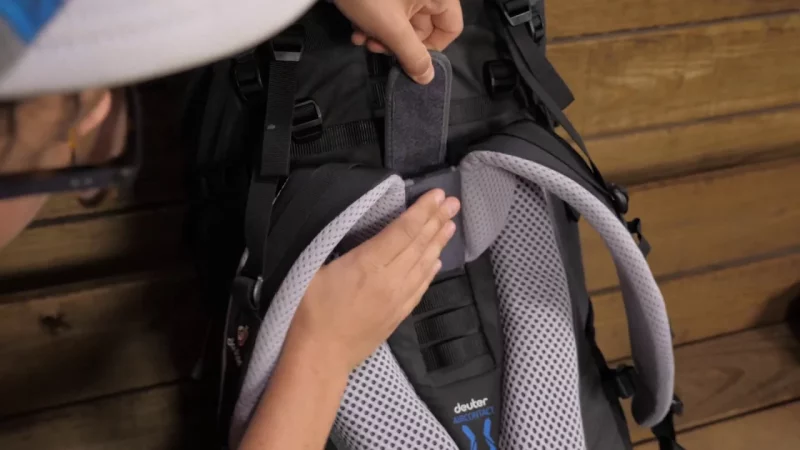How to adjust backpack straps is the biggest concern of people who enjoy using backpacks on their travels and daily lives. Properly adjusting your backpack straps is essential for a comfortable and pain-free experience while carrying heavy loads.
Loosen the shoulder straps, position the backpack correctly, and tighten the straps snugly. Adjust the sternum strap to stabilize the backpack and prevent straps from slipping off. Consider utilizing a hip belt for weight distribution and adjustable shoulder strap padding for added comfort.
Regularly check and readjust the straps as needed for a comfortable journey. Prioritize your comfort and enjoy your adventures without unnecessary discomfort or strain. Follow these easy tips to achieve a customized fit that distributes weight evenly and minimizes strain on your shoulders and back.

Understand The Basic Components
Adjusting the shoulder straps is the first step in achieving a comfortable fit. Start by loosening the straps to allow for easy adjustments. Put on the backpack and position it on your back, making sure the bottom rests comfortably on your lower back.
Gradually tighten the shoulder straps while holding the backpack in place. Adjust them until the backpack sits snugly against your back, with the weight distributed evenly. Check the fit to ensure the straps don’t dig into your shoulders or cause discomfort. When searching for how to adjust backpack straps, make sure to look this up as well.
If necessary, loosen them slightly and readjust until you find the right balance between support and comfort. The sternum strap plays a vital role in stabilizing the backpack and reducing strain on your shoulders. Locate the small strap connecting the shoulder straps across your chest.

While wearing the backpack, slide the sternum strap up or down until it rests comfortably across your chest, slightly above your breastbone. Fasten the sternum strap and adjust the tightness to ensure it is snug but not overly constricting. It should prevent the shoulder straps from sliding off your shoulders.
To achieve optimal comfort, consider additional adjustments. Ensure that the weight inside the backpack is evenly distributed. If your backpack has a hip belt, secure it around your hips and tighten it to transfer weight from your shoulders to your hips.
Adjust the shoulder strap padding to fit your shoulders comfortably and prevent discomfort. Regularly check and readjust the straps as needed during your journey, especially for long periods of carrying. By taking the time to adjust your backpack straps correctly, you’ll be able to embark on your adventures with confidence and enjoy the journey to its fullest.
Prioritize your comfort and minimize the risk of discomfort, fatigue, and strain on your shoulders and back. These points should be considered when looking up how to adjust backpack straps.
Start With the Shoulder Straps
The next step is to utilize the sternum strap, which plays a vital role in stabilizing the backpack and reducing strain on your shoulders. When looking for tips on how to adjust backpack straps, make sure to follow these. Follow these steps to adjust it properly:
- Locate the sternum strap: Identify the small strap connecting the shoulder straps across your chest.
- Position it correctly: While wearing the backpack, slide the sternum strap up or down until it rests comfortably across your chest, slightly above your breastbone.
- Adjust the tightness: Fasten the sternum strap and adjust the tightness to ensure it is snug but not overly constricting. It should prevent the shoulder straps from sliding off your shoulders.
Follow our how to adjust backpack straps guide to the T to achieve optimal comfort. Consider the following additional adjustments:

- Load distribution: Ensure that the weight inside the backpack is evenly distributed. Heavy items should be placed closer to your back to maintain balance and stability.
- Hip belt adjustment: If your backpack has a hip belt, secure it around your hips and tighten it to transfer some of the weight from your shoulders to your hips. This helps reduce strain and fatigue.
- Shoulder strap padding: If your backpack has padding on the shoulder straps, adjust it to fit your shoulders comfortably. Padding helps prevent discomfort and potential bruising caused by straps digging into your skin.
- Regular checks: Periodically check and readjust the straps as needed during your journey, especially if you’re carrying the backpack for an extended period. This will help maintain comfort and prevent strain caused by loosening or shifting straps.
By taking the time to adjust your backpack straps correctly, you can ensure a comfortable and pain-free experience while carrying heavy loads. It’s important to experiment with different adjustments until you find the right balance between support and comfort.
Remember to prioritize your comfort and well-being, as a properly adjusted backpack will help you enjoy your adventures without unnecessary discomfort or strain. When you search for how to adjust backpack straps, make sure to look for these points.
Utilize The Sternum Strap
To achieve optimal comfort and to follow the complete tips for how to adjust backpack straps, consider the following additional adjustments:
- Load distribution: Ensure that the weight inside the backpack is evenly distributed. Heavy items should be placed closer to your back to maintain balance and stability.
- Hip belt adjustment: If your backpack has a hip belt, secure it around your hips and tighten it to transfer some of the weight from your shoulders to your hips. This helps reduce strain and fatigue.
- Shoulder strap padding: If your backpack has padding on the shoulder straps, adjust it to fit your shoulders comfortably. Padding helps prevent discomfort and potential bruising caused by straps digging into your skin.
- Regular checks: Periodically check and readjust the straps as needed during your journey, especially if you’re carrying the backpack for an extended period. This will help maintain comfort and prevent strain caused by loosening or shifting straps.
By taking the time to adjust your backpack straps correctly, you can ensure a comfortable and pain-free experience while carrying heavy loads. It’s important to experiment with different adjustments until you find the right balance between support and comfort.
Remember to prioritize your comfort and well-being, as a properly adjusted backpack will help you enjoy your adventures without unnecessary discomfort or strain. Adjusting your backpack straps is essential for a comfortable fit and to prevent strain on your shoulders and back.

By following the steps outlined in our how to adjust backpack straps guide, you can achieve a customized fit that distributes weight evenly and minimizes discomfort. Take the time to adjust the shoulder straps, position the sternum strap correctly, and consider additional adjustments such as load distribution, hip belt adjustment, and shoulder strap padding.
Regularly check and readjust the straps as needed. With a properly adjusted backpack, you can embark on your adventures with confidence and enjoy the journey to its fullest. Your comfort and well-being are important, so make sure to prioritize them when adjusting your backpack straps.
Read more: How to Clean Osprey Backpack in Easy Steps
Fine-Tune For Comfort
To achieve optimal comfort while wearing a backpack, there are a few additional adjustments you can consider. First, it’s important to ensure that the weight inside the backpack is evenly distributed. This means that heavy items should be placed closer to your back to maintain balance and stability.
By distributing the load properly, you can prevent strain on one side of your body and reduce the risk of discomfort or injury. If your backpack has a hip belt, make sure to adjust it properly. Secure it around your hips and tighten it to transfer some of the weight from your shoulders to your hips.
This adjustment helps distribute the load more evenly and reduces strain on your shoulders, resulting in less fatigue during your journey. Shoulder strap padding is another feature to pay attention to. If your backpack has padding on the shoulder straps, adjust it to fit your shoulders comfortably.
This padding serves as a cushion and prevents the straps from digging into your skin, which can cause discomfort and potential bruising, especially when carrying a heavy load. Additionally, it’s a good practice to regularly check and readjust the straps during your journey, especially if you’re wearing the backpack for an extended period.

Over time, straps may loosen or shift, leading to discomfort or strain. By periodically checking and readjusting them, you can maintain optimal comfort and prevent potential issues. These tips from our how to adjust backpack straps guide will help you.
Conclusion
Properly adjusting your backpack straps is essential for a comfortable and pain-free experience while carrying heavy loads. By following the steps outlined in our how to adjust backpack straps guide, you can achieve a customized fit that distributes weight evenly and minimizes strain on your shoulders and back. Start by ensuring the straps are tightened securely but not too tight, allowing for proper support.
Adjust the straps so that the backpack sits snugly against your back, with the weight evenly distributed. Experiment with different strap lengths and positions to find what works best for you. Remember to make regular adjustments during your journey, especially if you feel any discomfort or strain.
By taking the time to adjust your backpack straps correctly, you’ll be able to embark on your adventures with confidence and enjoy the journey to its fullest, free from unnecessary pain or discomfort.

